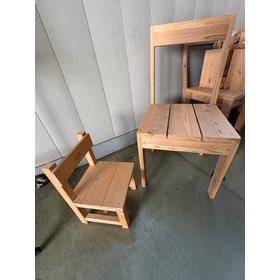Beautiful traditional Japanese roofing materials. It is a method of roofing using split boards of cedar and cypress, offering a high degree of flexibility in material choice.
Kakibuki is a traditional Japanese roofing technique that uses materials such as cedar and sawara. It allows for elegant curves and a sense of heaviness in the eaves, and while it is primarily seen in important cultural properties today, its popularity in Nordic-style architecture has led to its increasing use in new architectural designs. When using the same specifications as regular kakibuki, the raw material costs are generally high. However, it can be adapted to fit your budget, so consulting during the design phase will help ensure a smooth process. 【Kakibuki Features】 - Made with split boards of sawara and cedar, offering high material flexibility. For more details, please contact us.
Inquire About This Product
basic information
【Flow of the Persimmon Roof Construction】 ○ Material Procurement → Boards split by craftsmen are procured. ○ Construction → A hinoki bark roofer (hiwadabukishi) carries out the roofing work. (It is technically difficult to perform the work without a skilled hinoki bark roofer.) ● For more details, please contact us. If you prepare the drawings, current photos, budget, construction timing, location, and (in the case of re-roofing) the number of years since the last installation in advance, we can provide a smoother estimate.
Price information
Basically, we will respond to orders. The amount of materials used and the number of days required for construction vary by building. Therefore, we cannot provide a general answer to inquiries about the price per square meter. For details, please contact us with property photos and drawings.
Delivery Time
※Please contact us.
Applications/Examples of results
● New construction of a pergola roof for a childcare facility in Yamaguchi City, Yamaguchi Prefecture ● Delivery of persimmon wood in Shinjuku Ward, Tokyo
Company information
Hiwadaya Co., Ltd. was incorporated in 1994 and continues the tradition of "Hiwadaya," which dates back to the Tenpo era (1830s). The representative, Masashi Sasaki, is one of the few hinoki bark roofers in the country. Hinoki bark roofing is a construction method where materials made from the bark of hinoki (Japanese cypress) are fastened using bamboo nails, with examples including the Kyoto Imperial Palace, Kiyomizu Temple, and Itsukushima Shrine. We carry out roofing work using traditional Japanese techniques such as hinoki bark, kakibuki (kokerabuki), cedar bark, thatch, and copper roofing, honed through experience in temples and shrines. We receive numerous repair requests for properties with a focus on sukiya architecture and garden gates from all over the country. We are available for nationwide travel and will respond promptly to specific project estimates. Please feel free to contact us! We also recommend our custom-made high-end interior panel material "kasane," made from hinoki bark, for special customers. http://ka-sa-ne.com/





![[HAMRAH] Asphalt Shingle](https://image.mono.ipros.com/public/product/image/3be/2001370098/IPROS535725514516824932.jpg?w=280&h=280)
![[Material Presentation] FRP roofing material 'Banpo Light' that is strong against bending and impact.](https://image.mono.ipros.com/public/product/image/741/2000775655/IPROS45533758690308577819.jpeg?w=280&h=280)




